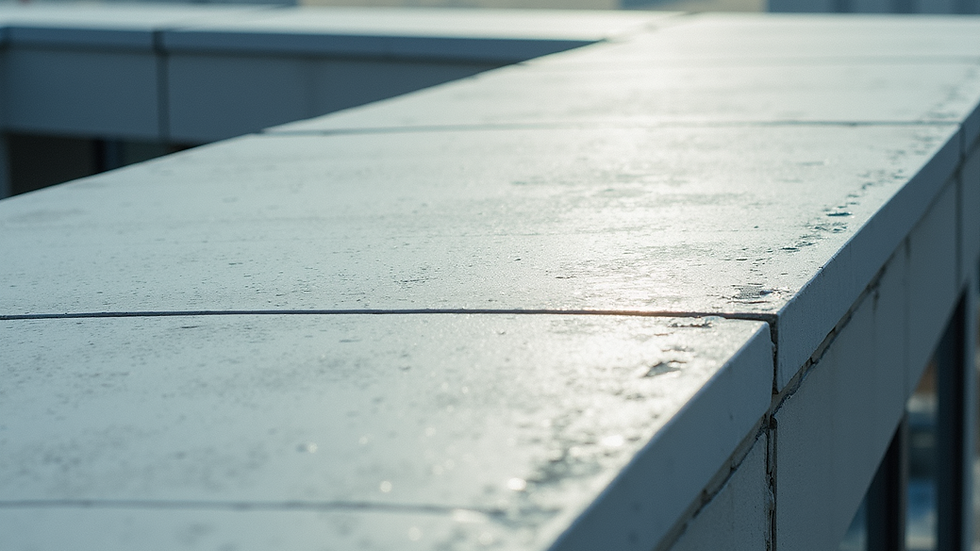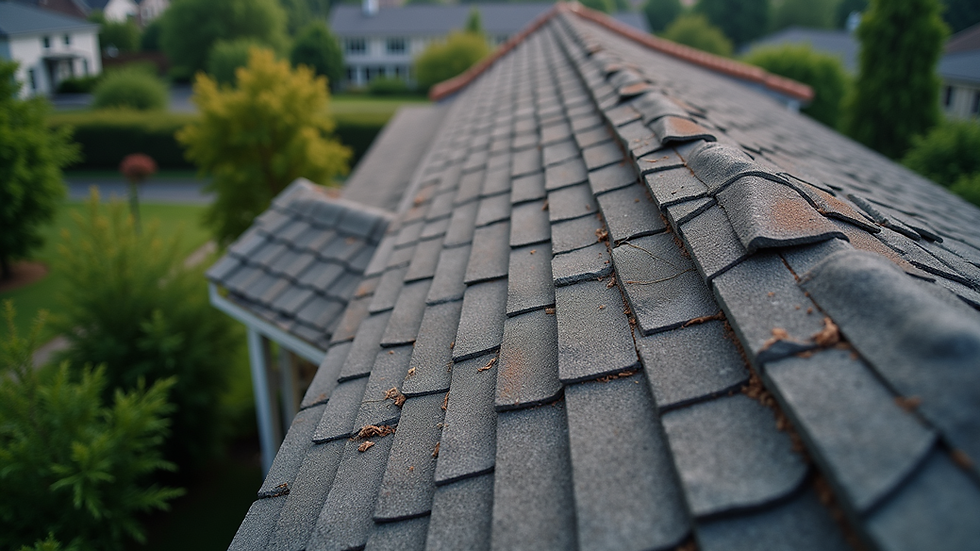Enhance Your Roof's Durability with Coatings
- carsonroofingfl
- Jul 21
- 4 min read
In the realm of home improvement, the roof is often overlooked. However, it plays an essential role in protecting your home from the elements. One effective way to enhance your roof's durability is through the application of roof protective coatings. These coatings can act as a shield, extending the lifespan of your roof while reducing maintenance costs. In this article, we will delve into the benefits of roof protective coatings, the types available, and potential disadvantages to consider.
What are Roof Protective Coatings?
Roof protective coatings are materials applied to the roof surface to provide an additional layer of protection. Designed for various roofing materials, these coatings can resist moisture, prevent leaks, and defend against harmful UV rays. They also help to reduce energy consumption by reflecting sunlight, keeping your home cooler.
One popular type of roof coating is elastomeric, known for its flexibility and waterproof capabilities. They expand and contract with temperature changes, making them perfect for climates with wide temperature ranges. Another option is reflective roof coatings, which can significantly lower cooling costs by reducing heat absorption.

Why Use Roof Protective Coatings?
The advantages of using roof protective coatings extend beyond mere aesthetics. Here are some compelling reasons to consider:
1. Cost-effectiveness
Applying a roof coating can be significantly cheaper than a full roof replacement. In fact, studies have shown that the investment in protective coatings can lead to savings of 50% or more on roof maintenance costs over time.
2. Enhanced Durability
Roof coatings can double or even triple the lifespan of your roofing material. They provide a barrier against harsh weather conditions, such as hail, rain, and extreme temperatures. As a result, your roof will endure wear and tear much longer.
3. Energy Efficiency
Reflective coatings can reduce your home's energy consumption considerably. By reflecting UV rays, they help minimize the heat absorbed by your roof, making it easier for your cooling system to maintain a comfortable indoor temperature. Homeowners can save up to 30% on their energy bills annually with the right reflective coatings.
4. Environmental Benefits
Using roof coatings not only protects your roof but also has a positive environmental impact. By extending your roof's life, you are reducing landfill waste associated with old roofing materials. Many coatings are environmentally friendly and have low volatile organic compounds (VOCs).

What are the Disadvantages of Roof Coatings?
While there are numerous benefits, roof coatings also come with certain drawbacks. Here are some potential disadvantages to keep in mind:
1. Initial Costs
The upfront investment for high-quality roof coatings can be significant. However, when evaluating the long-term savings, many homeowners find that it is worth the initial cost.
2. Weather Constraints
Roof coatings should be applied in specific weather conditions to ensure proper adhesion and efficacy. Extremely hot or cold temperatures can hinder the effectiveness of the application. Homeowners should consult professionals to determine the optimal time for application.
3. Limited Lifespan
While protective coatings can extend the life of a roof, they are not a forever solution. Depending on the type of coating and the climate, homeowners may need to reapply coatings every 5-10 years.
4. Surface Preparation
Before applying roof coatings, the surface of the roof must be properly prepared. This may involve cleaning, repairs, and sometimes priming. Homeowners should factor in the time and costs of this preparation.
Choosing the Right Roof Coating
Selecting the best roof coating depends on various factors, including your location, climate, rooftop structure, and your budget. It is essential to consult with professionals who have expertise in roof coatings. They can recommend the most suitable products tailored to your specific needs.
When considering a roof coating, it's vital to inspect your existing roof for damage. Uneven surfaces or significant wear may necessitate repairs before applying any coating. This preparation ensures that coatings adhere properly and perform effectively.
Maintenance Tips for Coated Roofs
Once you have invested in protective roof coatings, proper maintenance is crucial for maximizing their lifespan. Here are some actionable tips:
Regular Inspections: Conduct inspections at least twice a year and after any major storm. Look for signs of wear, cracks, or bubbling, which could indicate issues with the coating.
Cleaning: Debris can trap moisture, leading to damage. Regularly clean your roof to remove leaves, branches, and dirt to prevent moss and algae growth.
Prompt Repairs: Address any damage promptly. If you find cracks or blisters in the coating, seek repairs as soon as possible to prevent further water ingress.
Professional Assistance: Consider hiring professionals for major maintenance tasks. They have the right tools and expertise to address complex issues effectively.

Final Thoughts
Investing in roof protective coatings can dramatically improve the durability and efficiency of your roof. Not only do these coatings provide immediate benefits—like reducing energy costs and preventing leaks—but they also extend the lifespan of your roofing materials. It is a proactive way to protect your investment while contributing positively to the environment.
Before making a decision, weigh the advantages against the potential downsides and consult professionals who understand these systems thoroughly. With the right approach, you can ensure your roof remains in excellent condition for many years.
To learn more about how to enhance your roof with effective coatings, check out our resource on roof coatings.








